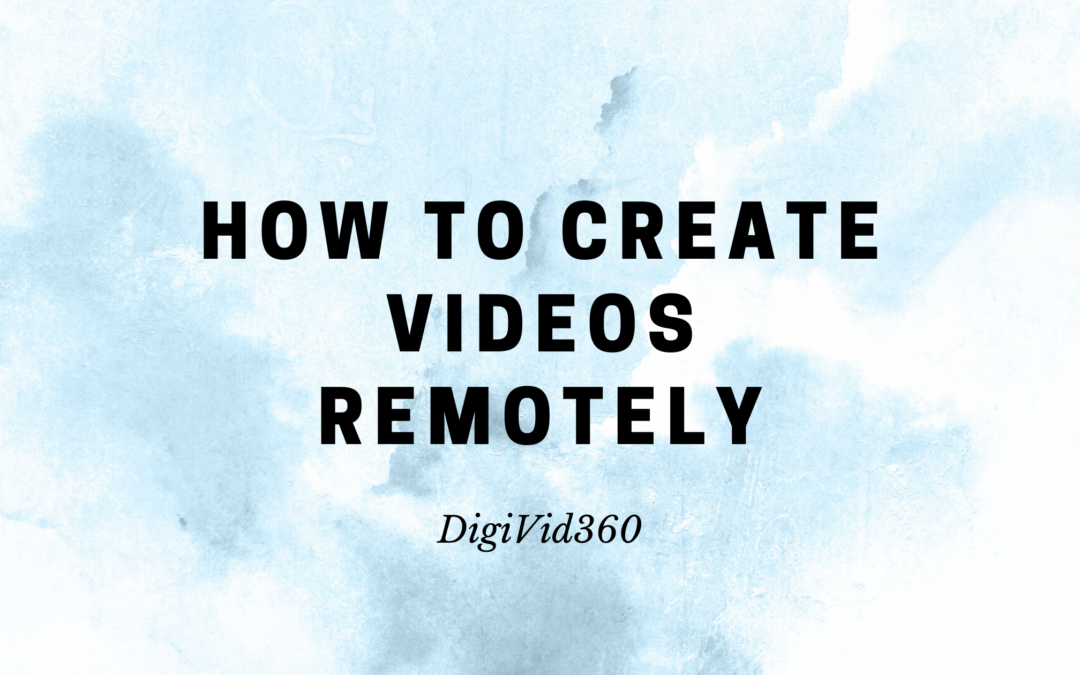Creating video content is a fantastic way to engage your audience. Having stunning, compelling video presentations can help bolster your content marketing. But creating a live video requires coordination. With limiting restrictions in place due to the COVID-19 lockdowns in place nationwide, you may be wary of filming live content at the moment. How do you create videos remotely with so many limits?
These limits shouldn’t slow you from creating videos, however. Video is one of the most popular content formats marketers turn to as part of their outreach strategies. Research shows that:
- Video is the most commonly used format in content marketing.
- 87% of marketers report video increasing traffic to their site.
- 80% of marketers report video leading to an increase in sales.
Videos help engage your viewer on multiple levels and creates material that promotes your message and keeps them informed and engaged.
You may have to get a little creative, but there’s no reason to stop creating videos due to the pandemic. With some ingenuity and time-tested best practices, your organization can create videos remotely that sell and compel.
How remote videos keep your content marketing strategy going strong
Videos can and should be a critical component of your marketing and promotional strategy. While filming videos remotely can seem like a challenge, they can actually be a cost-effective way to produce valuable content. The key is having someone on your team who understands how to film remotely.
For one, if you already have video content, you shouldn’t let the COVID-19 response stop your momentum. You’ll want to continue developing videos to build up your content library and continue establishing yourself as a source of information in your field.
If you don’t have videos as part of your content marketing strategy, there’s literally no better time to start than now. With viewers at home, they’re likely craving actionable, informative content. Partnering with the right video services provider can help you develop video content using already existing communication platforms to create stunning videos remotely. This can help you can get a major advantage on any competitors whose content creation may have slowed due to the lockdowns.
The advantages of creating remote videos
Don’t look at creating remote videos as a major shift in your content creation and development. It’s best to see it as a slight adjustment on the way you’ve done things in the past. With the right plan in place (and experts to help you through the process), you can keep creating great video content.
Some advantages of creating remote videos include:
- It’s relatively inexpensive. Due to their relatively low production costs, remote videos help you get more for your spending.
- It’s convenient. Sure, the process will involve some getting used to. But if you leave the process end of it to the right video services provider, the actual filming typically doesn’t require much coordination. Participants can film from their home offices.
- It showcases your team’s innovation and creativity. Sharing remote videos can help establish you as a forward-leaning, innovative business that can help other businesses solve their problems even during times of public crisis. It adds a veneer of resilience to your business that other businesses will take notice of.
So clearly, it’s advantageous to create videos, to do so remotely, and to continue doing it during the pandemic. But how do you go about doing it?
How to create videos remotely
Remote collaboration represents the future of work. This is true of the video creation process.
Pre-production is critical to creating a great remote video. This includes communicating with all parties involved. Most of the work should be done in the pre-production phase. That’s where you’ll outline your objective for the video, establish the concept, and create a production plan. If you don’t have experience with this kind of operation, don’t worry. There are experts who can help you make this process go as smoothly as possible. You’ll seamlessly transition from one phase of production to the next with the right team in place.
You’ll also want to determine what kind of video you’re creating. This is where you and your team will have to get a bit creative. It can certainly be a challenge when creating videos remotely, but the good news is there are a few formats that lend themselves to remote creation specifically. Let’s take a closer look at the types of videos you can make remotely.
Types of videos you can create remotely
When you make videos remotely, you may have to change from your usual format. That doesn’t mean you have to sacrifice quality, however. The following video content types can be produced remotely for compelling, engaging pieces of content for your overall marketing plan:
- Record video conference calls. Many video conferencing applications provide you with the capability to record the video. That means you can use it to capture your team’s video conferences and turn it into video content.
- Remote interviews. You can also record live interviews with experts in your field. You can either present the interview in its entirety or edit it to show just the highlights. This is a great way to promote expert voices who may not be in your organization, but can still provide your audience with great information.
- Animated motion graphic videos. You may have developed a document like a blog post or an infographic that packs lots of great data or actionable information into one concise product. You can use this data to create a new piece of content altogether — an animated motion graphic video. This is a unique way to reuse old content and package it in a fresh way that’s sure to call more attention to it.
Ultimately, creating remote videos provides you a way to continue creating great video content in a way that’s safe for you and your team. With a little flexibility from everyone involved, you can keep making winning content that amplifies your message while minimizing risk.
Interested in learning how to create videos remotely? DigiVid360 can help. We’re well versed in video content creation and know how to use technology to create top of the line remote videos. For more on how to get started, contact us today.






